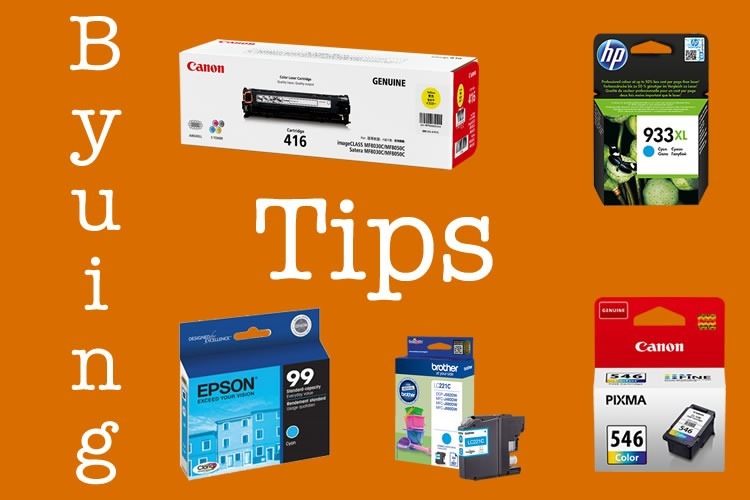The Ultimate Guide to Home and Home Office Printing
Home and home office printing has become a necessity for many people, especially with the rise of remote work and the growing need for personal printing solutions. However, without proper guidance, managing a home printing setup can become frustrating and costly. In this article, we’ll walk you through the key DOs and DON’Ts of home and home office printing, helping you avoid common pitfalls and optimize your printing experience.
Table of Contents
- Introduction
- DOs and DON’Ts of Printer Selection
- DOs and DON’Ts of Printer Setup and Maintenance
- DOs and DON’Ts of Paper and Ink Management
- DOs and DON’Ts of Wireless and Mobile Printing
- DOs and DON’Ts for Sustainable Printing
- Conclusion
1. Introduction
As more individuals work from home or manage personal tasks, a home printer is becoming an essential piece of equipment. Whether for printing documents, photos, or labels, the right printer can save you time and money. However, home printing isn’t always straightforward. Printer malfunctions, high costs for ink or toner, paper jams, and poor print quality can turn an easy task into a stressful experience. To help you maximize the efficiency and longevity of your home printing setup, we’ve compiled these important DOs and DON’Ts.
2. DOs and DON’Ts of Printer Selection
Choosing the right printer is the first step in creating a seamless home or office printing experience. Here’s how you can make the best choice:
DOs
- DO assess your printing needs: Before buying a printer, consider how often you’ll print, the types of documents you’ll need (text, photos, or graphics), and if you require features like scanning or copying. An all-in-one printer may be more useful for multi-functional needs.
- DO check for compatibility: Ensure the printer is compatible with your computer’s operating system and any other devices you plan to use. Check if it supports wireless printing from smartphones and tablets.
- DO consider the cost of ink or toner: A printer may be cheap upfront, but the real cost lies in how much ink or toner cartridges cost and how often they need to be replaced. Look at the cost-per-page specifications to understand how affordable it will be to maintain.
- DO invest in a reliable brand: Stick to well-known, reliable printer brands. Popular brands like HP, Canon, Epson, and Brother tend to have a larger selection of printers and better customer support. Plus, they typically provide regular software updates and troubleshooting resources.
- DO think about speed and volume: If you’ll be printing a high volume of documents regularly, choose a printer with a higher page-per-minute (PPM) rate. Similarly, if you frequently print double-sided pages, look for automatic duplex printing.
DON’Ts
- DON’T buy the cheapest option without research: It’s tempting to go for the lowest-priced printer, but these often have higher long-term costs due to expensive ink cartridges, slower print speeds, and poor durability.
- DON’T ignore printer connectivity: Modern printers come with a variety of connectivity options—Wi-Fi, USB, Ethernet, Bluetooth, etc. Don’t overlook these, especially if you plan to print wirelessly from multiple devices.
- DON’T overlook paper-handling capacity: If you print in high volumes, pay attention to the printer’s paper tray capacity. A low-capacity tray may frustrate you with frequent paper reloads.
- DON’T choose a printer without checking reviews: Online reviews can provide valuable insight into a printer’s performance, durability, and overall user satisfaction.
3. DOs and DON’Ts of Printer Setup and Maintenance
Proper setup and maintenance can save you from frequent breakdowns, ensure high-quality prints, and prolong your printer’s life.
DOs
- DO follow the manufacturer’s setup instructions carefully: Use the official setup guides, either through printed instructions or online tutorials. A poorly set-up printer may not function properly.
- DO install the latest drivers and software updates: Manufacturers regularly release driver updates to fix bugs and improve functionality. Keeping your drivers up to date ensures smooth performance and compatibility with newer operating systems.
- DO clean your printer regularly: Dust and debris can accumulate inside the printer and cause paper jams or print quality issues. Use a soft cloth to clean the exterior and follow the manufacturer’s guidelines for internal cleaning.
- DO perform regular nozzle checks and printhead cleaning: Most inkjet printers offer automatic printhead cleaning options to prevent clogged nozzles, which can degrade print quality. Schedule these cleanings to maintain high-quality prints.
- DO check for firmware updates: Some printers require firmware updates for improved performance and new features. Check your manufacturer’s website periodically for updates.
DON’Ts
- DON’T place your printer in dusty or humid environments: Dust and moisture can damage the printer’s internal components, leading to malfunctions. Always keep your printer in a clean, dry place.
- DON’T ignore warning messages: If your printer signals an error (e.g., low ink, paper jam, etc.), address it immediately. Ignoring these messages can cause permanent damage to your printer or lead to poor-quality prints.
- DON’T neglect paper jams: If you experience a paper jam, power down the printer before attempting to remove the paper. Follow the manufacturer’s guidance on safely clearing jams to avoid damaging the printer.
- DON’T use non-compatible ink cartridges: Using off-brand or incompatible ink can void your warranty and may cause irreversible damage to your printer.
4. DOs and DON’Ts of Paper and Ink Management
Paper and ink management are critical to maintaining print quality and cost-effectiveness.
DOs
- DO use high-quality paper: If you want crisp, professional-looking prints, choose good quality paper that matches your printing needs. For example, use photo paper for images and laser paper for text documents.
- DO store paper properly: Keep paper in a dry, cool place to prevent curling, warping, or sticking. Paper stored in humid environments can lead to jams and poor print quality.
- DO choose the right ink or toner: Always use ink or toner recommended by the printer’s manufacturer. This ensures that the colors and print quality are as intended.
- DO print in draft mode when possible: If print quality isn’t a major concern, switch to draft mode. It uses less ink and prints faster, which is ideal for internal documents or drafts.
- DO refill ink when necessary: Monitor your ink levels and refill or replace cartridges when they are low to avoid unexpected interruptions.
DON’Ts
- DON’T overload the paper tray: Overloading can cause paper jams and damage the internal feeding mechanism of the printer.
- DON’T mix different paper types in the same tray: Combining paper types in one tray can cause the printer to misfeed, leading to jams or poor-quality prints.
- DON’T shake ink cartridges before installation: This can cause air bubbles that may affect print quality. Simply remove the packaging and install it following the manufacturer’s instructions.
- DON’T leave ink cartridges empty for too long: Running your printer with an empty cartridge can cause irreversible damage to the printhead, leading to expensive repairs or replacement.
5. DOs and DON’Ts of Wireless and Mobile Printing
Wireless and mobile printing have become a staple in home offices. Here’s how to make the most of it.
DOs
- DO ensure your printer is on the same network as your devices: For wireless printing to work, both your printer and your computer, phone, or tablet must be connected to the same Wi-Fi network.
- DO use manufacturer apps for mobile printing: Many printer manufacturers offer mobile apps (such as Canon PRINT, HP Smart, and Epson iPrint) that make it easier to print directly from your smartphone or tablet.
- DO enable cloud printing for convenience: Some printers support Google Cloud Print or other cloud services, which allow you to print documents from anywhere.
- DO secure your printer: Set a password for your printer and enable encryption to prevent unauthorized access. This is especially important if you live in a shared building or have sensitive information being printed.
DON’Ts
- DON’T ignore your network speed: Wireless printing can slow down if your Wi-Fi connection is weak. Ensure you have a reliable and fast Wi-Fi signal in the area where your printer is located.
- DON’T forget to check the printer’s mobile compatibility: Not all printers support mobile printing out of the box, so verify if your printer is mobile-print-ready before making a purchase.
- DON’T print from unsecured networks: Printing sensitive information over unsecured networks exposes you to data theft. Always print from a secure, private network.
6. DOs and DON’Ts for Sustainable Printing
Environmental concerns should always be taken into account, even for home and office printing.
DOs
- DO print double-sided when possible: This cuts down on paper use, which is better for the environment and reduces costs.
- DO recycle used cartridges and paper: Most printer manufacturers offer recycling programs for used ink cartridges. Additionally, be sure to recycle paper responsibly after use.
- DO use energy-efficient printers: Look for printers with an Energy Star certification to save on electricity.
- DO preview your print job: Always review the document before hitting print to avoid unnecessary mistakes that waste paper and ink.
DON’Ts
- DON’T print excessively: Avoid printing documents you don’t need. Whenever possible, opt for digital sharing methods to save paper and ink.
- DON’T dispose of cartridges improperly: Throwing cartridges in the trash can harm the environment. Instead, find a local recycling center or use the manufacturer’s recycling program.
7. Conclusion
Setting up and maintaining a home or home office printer doesn’t have to be a challenge. By following these simple DOs and DON’Ts, you can improve your printing experience, reduce costs, and extend the lifespan of your printer. From selecting the right printer to using it sustainably, these tips will help you stay productive and environmentally conscious. Remember, a little planning and routine maintenance go a long way toward keeping your home printing setup running smoothly!


